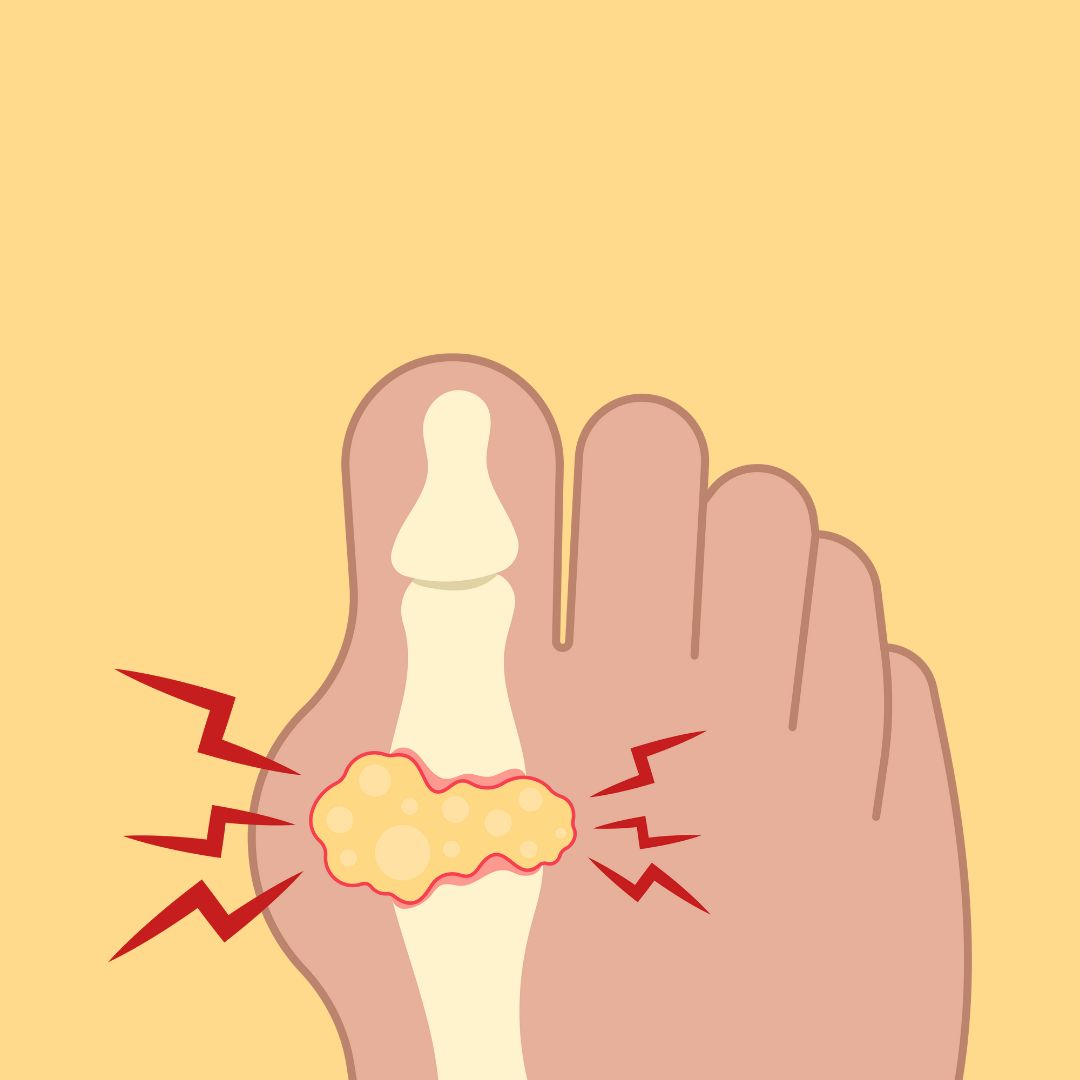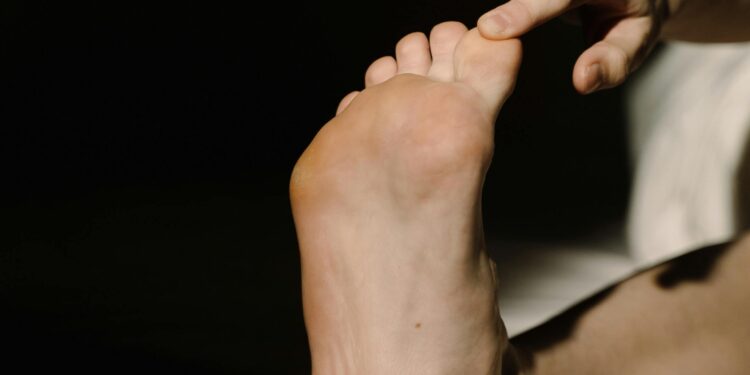There are bumps that sometimes appear at the side of the toes which are referred to as bunions. It’s maybe from those tight shoes you love wearing. But it is pretty easy to mix up bunions and a condition called gout.
Gout can sometimes look like a bunion, but they are not the same thing. Bunion is more of a slow, steady nuisance, while gout hits you hard and fast. In this article we are going to learn more about gout, how it forms, its symptoms and causes.

What is a Gout?
Gout is a type of arthritis which appears on a big toe, looking red and swollen, almost like an infection. This condition affects 1-4% of the global population, causing them intense and sudden pain.
There are certain groups of people who are more likely to get gout. This increased chance is dependent on some factors. Age and gender are some of the factors that matter. Gout is more common in men, especially as they age.
What you eat also plays a role in the development of gout. Some foods you consume on a daily basis can increase your uric acid levels, which causes gout.
Symptoms of Gout
- Sudden pain in a joint, often the big toe
- The area around the joint becomes swollen
- The skin around the area becomes red
- The joint begins to hurts a lot when you lightly touch it
- It’s commonly found in areas like the big toe, ankle, and knee
- Hard lumps under your skin
- Deformed joints of the affected area
What Causes Gout?
Uric acid buildup: Uric acid is the breakdown of purine which are minerals found in red meat, seafood, and alcohol.
Besides breaking down purines found in food, the body actually produces purines.
Usually, your body removes uric acid by dissolving it in your blood, which sends it to your kidneys, before flushing it out through the urine. In a case where your body produces a lot of uric acid because of the food you eat. Or your kidneys stop working because of some condition or medication, uric acid begins to build up in the blood, leading to gout over time.
Hyperuricemia: There’s a condition called hyperuricemia, which is basically when uric acid levels in your blood get too high.
This condition can cause sharp, needle-like crystals to form in your joints. These crystals are what cause the intense pain and swelling in the joint area. If your body can’t manage the uric acid it has, it begins to accumulate somewhere, in this case, the joint.
Are There Certain Factors That Contribute To The Buildup of Uric Acid?
As a matter of fact, there are. It mainly has to do with the kind of food that you consume (your diet). Most people love eating seafood and red meat. While they’re excellent choices for protein, they can increase the amount of uric acid in the blood. Alcohol too increases uric acid levels in the blood.
Another daring factor is obesity. Typically, being obese can spike up the level of uric acid in the blood. Not only that, but the kidneys will also have a hard time discharging this substance from the body. These two factors combined to give you an even higher level of uric acid, which can lead to gout.
Lastly, some medications like diuretics, also known as water pills, can interfere with how well the body handles uric acid. This interference can lead to a build up of uric acid, which then forms crystals at the joint of your big toe.
Bottom Line
Even though bunions and gout might look alike, they’re really not the same thing. Bunions are those annoying bumps that build up over time, usually from wearing tight shoes. Gout, on the other hand, hits hard and fast, causing serious pain due to high levels of uric acid in your blood.
















